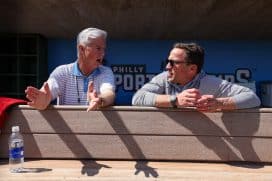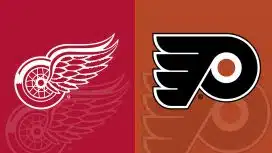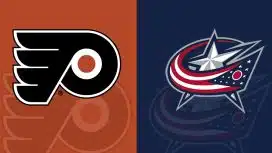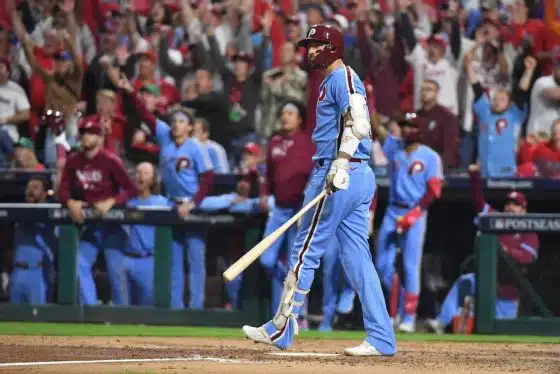Uncategorized
#AskSteezy, Volume 1: Defensemen, Facial Hair, and Vinny
(picture from islanders.nhl.com)
At an in-between time for columns (winning streak over, losing streak not at a newsworthy level, and no glaring advanced statistic trends leaping off the screen at me), I decided to field questions this week and answer them in what will be the first of hopefully many #AskSteezy mailbags. Feel free to submit your questions for future editions to me on Twitter @GoingHard_inger and by email at SLHardinger10 (at) gmail (dot) com.
Valued Twitter user Johnny Tsunami @Barty_intheUSA asks, “Why is Braydon Coburn still on this hockey team”?
Well, Johnny Tsunami, the short answer is because Braydon Coburn is a useful hockey player who is doing a good job for the Philadelphia Flyers. Get ready for the long answer. It’s not his heyday of 2007-2009, when he tallied 16 goals and 48 assists in 158 games, but Coburn has 5 goals and 11 assists so far in 72 games. Moreover, he’s been saddled with a lot of defensive responsibility and has handled himself well so far. Coburn has a Corsi For% of 51.5%, a Fenwick For% of 50.1%, a CF rel% of 2.5%, and a FF rel% of 1.7%, all good for 6th best on the team (2nd among defensemen behind Kimmo Timonen). So he’s been the Flyers’ 2nd-best defenseman possession-wise at even-strength, and he’s doing so despite difficult deployment. His Offensive/Defensive Zone Start Ratio is the worst on the team among defensemen besides Nicklas Grossmann, and he is on the ice of 59.5% of the team’s penalty-killing time, tops on the team. His quality of competition faced is 29.5%, tied for Claude Giroux for tops on the team.
To simplify: he’s the Flyers 2nd-best driver of even-strength play among defensemen despite starting the 2nd-least frequently in the offensive zone and facing the toughest opponents. After a rough, injury-shortened showing in the abbreviated 2013 season in which he was asked to carry more of a puck-moving burden on a pairing with Nicklas Grossmann, Coburn has rebounded nicely. A large part of this has no doubt to do with his reunion with Kimmo Timonen, but Coburn has also gotten back to his previous level of very solid play. He’s not a two-way top pairing defenseman in an ideal situation, though he possesses many of the physical attributes of one. However, he is a very nice addition to a team’s top-4. Using him in a role similar to the glory days of 2010, when he was paired with a younger, better Kimmo Timonen and joined the Chris Pronger-Matt Carle pairing in the Flyers’ top-4 would be ideal. However, the Flyers’ defense corps is far from ideal right now. Coburn is solid at everything: he’s one of the defense’s best two skaters, he’s one of its best two defensively, and he can handle himself adequately offensively. Coburn is a useful player for the Flyers defense, and he’s criminally underappreciated by a large segment of the team’s fan base.
Broad Street Hockey’s very own Kurt @Kurt_BSH (great Flyers mind, must-follow) had two questions for me. First, “how much hard_inger ARE you going, anyways?”
I could tell you, but then I’d have to kill you.
Second: “What do you Luke Schenn’s realistic ceiling is moving forward? Still time to improve?”
(pic via philly.com)
This is an interesting question. I think it’s safe to say that we’re past the point of no return with the JvR trade. The Flyers lost it because they sold low on a bona fide top-line power LW so they could buy high on a slow, mostly one-dimensional defensive defenseman. It’s time to stop evaluating Luke Schenn in the context of James van Riemsdyk and start evaluating him based on his own merits.
Schenn’s CF% is 48.1%, his FF% is 47.3%, and his CF rel% and FF rel% are both -2.5%. The CF% marks are good for 6th on the Flyers defense-ahead of Nicklas Grossmann, but behind Erik Gustafsson-while the FF% marks are good for 5th-ahead of both Grossmann and Andrew MacDonald. These are all drop-offs from his encouraging 2013 season, where his CF% and FF% marks were both good for 2nd on the team, second only to Timonen. His point production was better last year as well: in 48 games, he had 3 goals and 11 points on 81 shots in 47 games. This year, he’s managed 4 goals and 11 points in 69 games on only 72 shots. His deployment has slightly varied from last year to this year. Last year, he was used in a nominal top pairing with Kimmo Timonen (who has consistently proven to be able to pull up his partner’s production). He faced a quality of competition of 29.4%, which was 3rd on the Flyers among defensemen behind Timonen and Coburn and had an O/DZone start ratio of 46.2%-3rd on the Flyers behind Timonen and Bruno Gervais. Essentially, Schenn-Timonen was the team’s top pairing for the vast majority of the year due to the rash of injuries on defense and the struggles of the Coburn-Grossmann tandem. This year, he has the highest offensive/defensive zone starts ratio of any Flyers defender (55.1%) and is facing a 27.1% quality of competition-lower than every other Flyers defenseman besides Erik Gustafsson. He’s been on the 3rd pairing all season, alternating partners among Andrej Meszaros, Gustafsson, and most recently Andrew Macdonald.
It’s fair to say that Schenn has regressed from a surprisingly positive 2013 season despite easier zone starts and competition. It’s also fair to say that the revolving door of partners he’s been paired with hasn’t helped matters. Which brings me to the second part of the question: does he still have time to develop? I would say yes. Schenn’s been in the NHL for a few years, but he’s only 24. The learning curve for blueliners is notoriously longer and young defensemen often improve in their second organization, so there’s a decent chance he could still get better. How much so is a good question. He’ll show flashes of potential from time to time-his stretch pass to spring Vinny Lecavalier for a breakaway goal in the 4-0 win over the Penguins was a perfect example. However, his lack of foot speed will prevent him from reaching the ceilings that were projected for him when he was drafted and when the Flyers traded for him. Additionally (and this is completely subjective), it feels like Schenn thinks too much while he’s on the ice. You can almost see him thinking as he plays-the double clutch on his shots in the offensive zone, the indecision with the puck in his own zone. However, he’s a good shot-blocker, penalty killer, and can chip in a solid play from time to time. As of now, I would say he’s roughly an average 3rd-pairing player. I think he can potentially improve to the level where he can be a decent 4th defenseman or a good 5th defenseman if paired with the right partner. He needs someone to help him move the puck-an Erik Gustafsson or Mark Streit type (his CF% with Streit this year is a very solid 51.2%). There’s not a doubt that he’ll forever be listed on the negative side of the leger in one of Paul Holmgren’s most lopsided trades, however.
Facial hair and Sean Couturier enthusiast @cootersbeard asked "Should I shave?"
If it was up to me, never. If the Flyers make the playoffs though, I would imagine he'll shave and start the postseason fresh. But that beard is glorious.
(pic via csnphilly.com)
Noted sports enthusiast Not Famous Jason @JasonAAV asked, “Nick Grossmann why thx”?
Jason, like me, is not a fan of Nicklas Grossmann in the slightest. He’s a plodding, one-dimensional player who sports hideous possession numbers. His 46.6% CF% and -5.2% CF rel% are the worst among Flyers D-men, while his 46.7% FF% and -3.7% FF rel% are only better than Andrew MacDonald’s. His only useful skills (blocking shots, hits) are only employable when the other team is in possession of the puck, and Grossmann’s numerous flaws (poor skating ability, inability to make crisp, clean passes, poor puckhandling, and harmless point shot) mean that he fails to produce points and gives the opponent the puck far more often than his teammates. His quality of competition (28.6%) is 3rd among Flyers defensemen and his O/DZ star ratio of 44.9% is the hardest among team defensemen, so his struggles are somewhat understandable. However, it does the team no good to give a bad player hard minutes and watch him get run over in said minutes. He’s a solid penalty killer, but a player like that should be lodged firmly on your bottom pairing if he’s in the lineup at all. Instead, the Flyers are giving him top-4 minutes and paying him $3.5M per season. I’m in favor of scratching Grossmann or MacDonald for Gustafsson (MacDonald’s superior foot speed and first pass give him the edge to stay in the lineup over Grossmann for me), but that won’t happen any time soon. To answer the “why” in your question: it’s because the Flyers have one of the most backwards front offices and coaching staffs in the league. Paul Holmgren, Ed Snider, and Craig Berube have antiquated ideas about what the most valuable traits a defender can have are, and as a result they believe Nick Grossmann is a good player. It’s unfortunate, but seems to be the reality we’re living with for at least this year and next year.
(picture via Jim McIsaac)
Avid Flyers and Eagles fan Dan Klausner @dklausner asks two questions. First, “Purpose of Grossmann’s existence what is it also why is he existing on our favorite hockey team”?
The purpose of his existence would seem to be a deeper question about the meaning of life and why we’re all here. I supposed, gun to my head, I would say the purpose of Grossmann’s existence is to be the best person he can be, just like the rest of us. As to why he exists on our favorite team, the literal answer would be because he signed a contract extension for 4 years at a cap hit of $3.5M US dollars in the spring of 2012. A more nuanced answer would be a continuation of the one from the previous question: the Flyers’ decision-makers value traits like blocked shots and hits in defensemen they view to be “shutdown” or “stay-at-home” players instead of actual shot prevention or shot generation in defensemen who are actually effective at one or both ends of the ice. For the analytically-minded fan, the Flyers are not always the best team to root for.
Dan’s second question is an entirely different one: “Why haven’t the Canadiens been contracted yet for the Gomez-McDonagh trade?”
This trade would never fail to make me laugh if it hadn’t made the Rangers a dramatically better team. Gomez was traded 2 years into a 7-year, $51.5M contract he signed with the Rangers in 2007 free agency to Montreal for McDonagh, their 2007 1st round pick. Since the trade, Gomez tallied just 21 goals and 101 points in 196 games for Montreal before being bought out while McDonagh has blossomed into a very good top-pairing defenseman for the Rangers and a valuable member of the US Olympic team (he also has 26 goals and 103 points as a Ranger, for the record.) I think the reason the NHL hasn’t contracted Montreal is probably because of their status as an Original Six team and their illustrious history including 24 Stanley Cups. Final note: this trade is almost as hilarious as the story that the Canadiens were willing to trade Carey Price, Max Pacioretty, a 1st round pick, and either Ryan McDonagh or PK Subban to the Lightning for Vinny Lecavalier before Tampa Bay’s ownership nixed the deal. Have to feel like the people running the Canadiens around this time weren’t exactly the best at their jobs.
Social Content Producer joe M @dr_pizza_MD (another must-follow on Twitter) asks: “Buff, PK, or another D…what’s the most likely acquisition this offseason”?
An excellent question. There have been rumors tying the Flyers to Winnipeg’s Dustin Byfuglien for some time now. The forward turned defenseman turned forward again possesses a booming shot from the point, and is a surprisingly good possession player. Amid character and conditioning questions, Winnipeg has been rumored to be interested in trading him for some time now. As far as the Flyers are concerned, the price tag is supposedly something based around Brayden Schenn. Unless that asking price drops, I doubt the Flyers would trade for Big Buff. He would instantly help the Flyers blue line, but they seemingly won’t move Schenn for anything less than a two-way top-pairing defenseman, and they don’t seem to value Byfuglien as such.
Subban is a very intriguing possibility. He’s an RFA coming off a Norris Trophy in 2013 and figures to get a massive raise after settling for a bridge contract following his unsuccessful holdout at the start of last season. The Flyers have shown that they’re not shy about offer-sheeting a player that they want (Chris Gratton, Ryan Kesler, and most notably Shea Weber), and Subban would fill the Flyers’ glaring hole on the top pairing without compromising Sean Couturier, Schenn, or any of their top prospects (Scott Laughton, Sam Morin, Robert Hagg, Shayne Gostisbehere). The Canadiens have 15 players under contract for next season with nearly $27.4M in projected cap space. With only Subban (RFA), Thomas Vanek, Brian Gionta, Andrei Markov, and Lars Eller (RFA) needing new deals out of their core, one would think they’d be able to fit everyone under the cap. The Flyers would need to make an extravagant offer for the Canadiens to take the draft pick compensation and let Subban go-somewhere in the neighborhood of $10M+, I would imagine. It’s hard to see a scenario where the Canadiens let their best defenseman go for future draft picks.
That leaves the “other D” portion of the question. The Flyers have been tied to Keith Yandle in the past, and he’s having another excellent season offensively for the Coyotes with 51 points in 74 games. Free agent options will include Matt Niskanen, Joni Pitkanen, Brooks Orpik (more on him later), Ron Hainsey, Anton Strahlman, Mark Fayne, and Tom Gilbert, and there is always the possibility of a trade for a different player as well. And I would be remiss to leave out UMass-Lowell defenseman Christian Folin, who is a highly-touted, highly-coveted college free agent defenseman with an all-around skillset in a tantalizing 6’3, 210 package. The Flyers are rumored to be one of the finalists to acquire his services. With all these other options (Fayne and Gilbert would be my choices), I would say that acquiring a defenseman not named Byfuglien or Subban is the most likely outcome this offseason. (TL;DR-the Flyers are trading for Shea Weber.)
Twitter user Dan Schmidt @3DPhillySports inquires, “How much will Paul Holmgren give Brooks Orpik this summer?”
Hopefully nothing. I shudder at the thought of paying Brooks Orpik lots of money in free agency. Orpik’s 46% CF% is abysmal, though he still somehow manages to be ahead of Robert Bortuzzo, Deryk Engelland, and Rob Scuderi among Penguins defensemen. He’s given the hardest zone starts and the 2nd-hardest competition among Pittsburgh defensemen, but he gets dominated in these tough minutes. He’s basically their version of Nicklas Grossmann. The fact that he made Team USA is a complete and utter farce. Please stay far, far away, Paul Holmgren.
Twitter user Chris Pereira @cpereira14 asks “why do the Flyers continue to keep Lecavalier on the 2nd line? He can’t handle, turns pucks over like crazy. Move Raffl to second line and Vinny to fourth line–no time to worry about egos.”
(picture via philly.com)
Chris, I wholeheartedly agree. Not only is Vinny not living up to his 5-year, $22.5M contract on the scoresheet (15 goals, 30 points in 59 games, with only 7 goals and 10 assists coming at 5v5 play), but he’s also been a black hole possession-wise. His 44.8% CF%, -5.8 CF rel%, 44.7% FF%, and -5.1% FF rel% all rank behind every single Flyer aside from the rotating members of the 4th line-Chris Vandevelde, Zac Rinaldo, Adam Hall, and Jay Rosehill. What’s even worse is that he’s dragging the players around him down with him. He makes just about every single Flyer worse when they share the ice with him-see this great article (great as in quality of analysis, not the statistics within) from Broad Street Hockey for reference. The fit of Lecavalier on the left wing with Schenn and Wayne Simmonds is an awkward one both in terms of possession and the eye test. Vinny fumbles pucks, misfires on passes, struggles to keep up with his younger, faster linemates and is playing on his off-wing to top things off. The possession stats back this up: Schenn’s CF% goes up from 45.9% with Lecavalier to 49.8% without him, and Simmonds’s splits are even more dramatic: 44.1% CF% with Vinny and 52.1% without him. I agree that right now the Flyers would be better off with Raffl on the 2nd line LW, but it’s not going to happen any time soon. The Flyers aren’t going to admit they were wrong about Vinny less than a year into a 5-year deal. That would make both them and Vinny look bad (though it could help convince him to waive his no-trade clause if that avenue were to present itself). I would expect to see the same or very similar lines for the rest of the season. However, for next season I am definitely in favor of moving Vinny down in the lineup.
I’ve actually come up with what I think could be a fairly simple solution to the problem. If the Flyers were to acquire another top-6 LW (say, Thomas Vanek or Matt Moulson), they could bump Vinny down to the 4th line at C (where he’s more comfortable anyway) and roll out a forward group resembling something like this: Vanek/Moulson-Giroux-Voracek, Hartnell-Schenn-Simmonds, Raffl-Couturier-Read, McGinn-Lecavalier-Laughton. Tye McGinn and Scott Laughton aren’t your typical 4th line players, and Craig Berube could conceivably trust this line with more ice time than the current group. They would also pack a decent amount of offensive punch, and while they might have some struggles in the defensive zone (Laughton figures to be good there, but will be an NHL rookie and McGinn/Vinny have never been known for their defensive prowess), they won’t be any worse than the current marginal group of players they employ there. They could also give Vinny his 2nd PP-unit time (where almost half his goals have come) and he could move up in the lineup in the event of an injury. Playing him and McGinn with Laughton would help ease the rookie into the NHL. They would figure to have a distinct advantage over most, if not all other 4th lines. It would also fix the rest of the top-9: Giroux and Voracek would get the pure shooter/scorer they would thrive with at LW1, Hartnell would bring his play-driving abilities to the 2nd line and re-join Schenn and Simmonds (remember, they had a successful run together earlier this season) and Raffl would move up to the 3rd line to replace the (potentially) departed Steve Downie as a shutdown forward alongside Couturier and Read.
The odds that this happens? Absolutely zero. The Flyers are never going to ice a 4th line devoid of “grit” and “toughness”, not to mention fighting ability. Even though this Flyers team employs plenty of players who can handle themselves with their fists (Hartnell, both Schenns, Simmonds, McGinn, Vinny), they still feel the need for an enforcer type of player. So while I agree that the Flyers would be best served to move Vincent Lecavalier to the 4th line (and surround him with relatively talented teammates, give them somewhat sheltered minutes, and give Vinny 2nd PP time) and embrace the relative sunk cost of his contract, don’t expect them to do so any time soon.
Thanks for the questions, and thanks for reading!












































